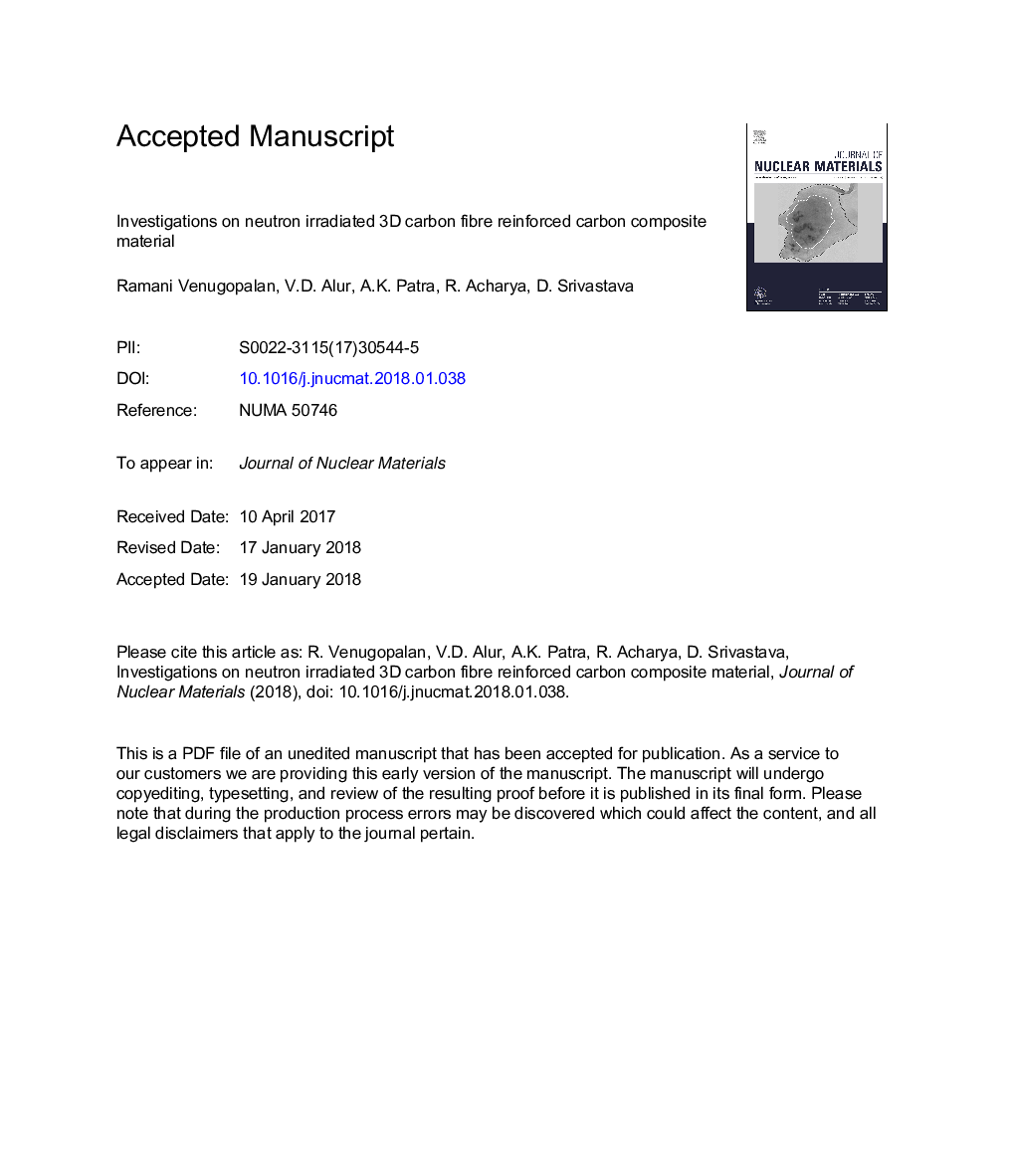| Article ID | Journal | Published Year | Pages | File Type |
|---|---|---|---|---|
| 7963405 | Journal of Nuclear Materials | 2018 | 17 Pages |
Abstract
The carbon fiber reinforced composite was subjected to neutron irradiation in the research reactor DHRUVA. The irradiated samples were characterized by Differential Scanning Calorimetry (DSC), small angle neutron scattering (SANS), XRD and Raman spectroscopy. The DSC scans were taken in argon atmosphere under a linear heating program. The scanning was carried out at temperature range from 30â¯Â°C to 700â¯Â°C at different heating rates in argon atmosphere along with reference as unirradiated carbon composite. The Wigner energy spectrum of irradiated composite showed two peaks corresponding to 200â¯Â°C and 600â¯Â°C. The stored energy data for the samples were in the range 110-170â¯J/g for temperature ranging from 30â¯Â°C to 700â¯Â°C. The Wigner energy spectrum of irradiated carbon composite did not indicate spontaneous temperature rise during thermal annealing. Small angle neutron scattering (SANS) experiments have been carried out to investigate neutron irradiation induced changes in porosity of the composite samples. SANS data were recorded in the scattering wave vector range of 0.17â¯nmâ1 to 3.5â¯nmâ1. Comparison of SANS profiles of irradiated and unirradiated samples indicates significant change in pore morphology. Pore size distributions of the samples follow power law size distribution with different exponent. Narrowing of SANS profile of the irradiated sample indicates creation of significant number of larger pores due to neutron irradiation.
Related Topics
Physical Sciences and Engineering
Energy
Nuclear Energy and Engineering
Authors
Ramani Venugopalan, V.D. Alur, A.K. Patra, R. Acharya, D. Srivastava,
